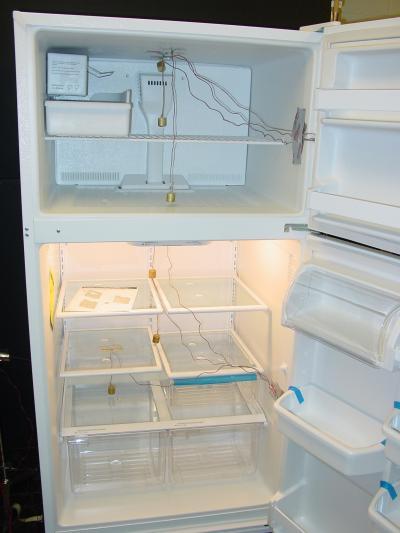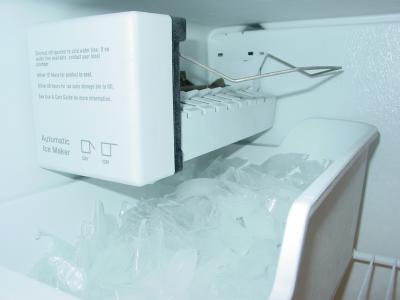In tests of four different types of new refrigerators, National Institute of Standards and Technology (NIST) researchers found that ice makers increased rated energy consumption by 12 to 20 percent. About three-fourths of that additional energy cost is due to the electric heaters used to release the ice bits from the molds.
With only one-fourth of the extra energy actually used to cool and freeze water, "there are substantial opportunities for efficiency improvements merely by optimizing the operations of the heaters associated with the ice makers" or by introducing a more efficient alternative technology, report NIST mechanical engineer David Yashar and guest researcher Ki-Jung Park.*
Since refrigerators account for 8 percent of the total energy consumed by 111 million U.S. households according to the Department of Energy (DOE), the potential savings are significant.
Currently, ice maker energy consumption is not reflected in federal minimum efficiency standards for refrigerators or in the voluntary Energy Star program, which requires energy usage to be significantly lower than the regulatory limit.
DOE, which helped to fund the NIST study, has announced that it will increase the minimum efficiency standard by 25 percent over the current level, starting in 2014. DOE also intends to incorporate the energy used by ice makers into their regulatory test. Because no widely accepted test for ice makers was available when they announced these intentions, DOE plans to add 84 kilowatt hours to the energy efficiency rating of every refrigerator equipped with an ice maker, Yashar explains.
Once a reliable, straightforward test is available, he adds, DOE will eliminate the "placeholder" energy consumption and use actual ice maker test results in efficiency ratings.

One of four types tested by NIST researchers, this top-mount refrigerator freezer was outfitted with three thermocouples in each compartment, sampling the temperature every 30 seconds.
(Photo Credit: NIST)
To speed progress along this path, Yashar and Park evaluated several different approaches to measure the energy consumption of ice makers. Their goal was to identify a method that consistently yielded accurate results but did not add substantially to the complexity of appliance energy consumption tests under current regulations.
Yashar and Park examined four refrigerators, which sampled a variety of ice maker technologies. Their study used a uniform test setup, consistent with current regulatory procedures, and measured the energy consumption of the four units while their ice makers were actively producing ice and, again, while the ice makers were not operational.
The results point the way to a standard test methodology that appears promising for several different ice maker technologies and configurations. Next steps include sharing their approach with other laboratories, which also will test ice makers and compare results for similar units. Also, Yashar says he intends to evaluate the measurement techniques on other styles of automatic ice makers.

In all units tested, about three-quarters of ice-maker energy consumption was directly and indirectly attributed to the electric heaters used to free ice from molds.
(Photo Credit: NIST)
Source: National Institute of Standards and Technology (NIST)